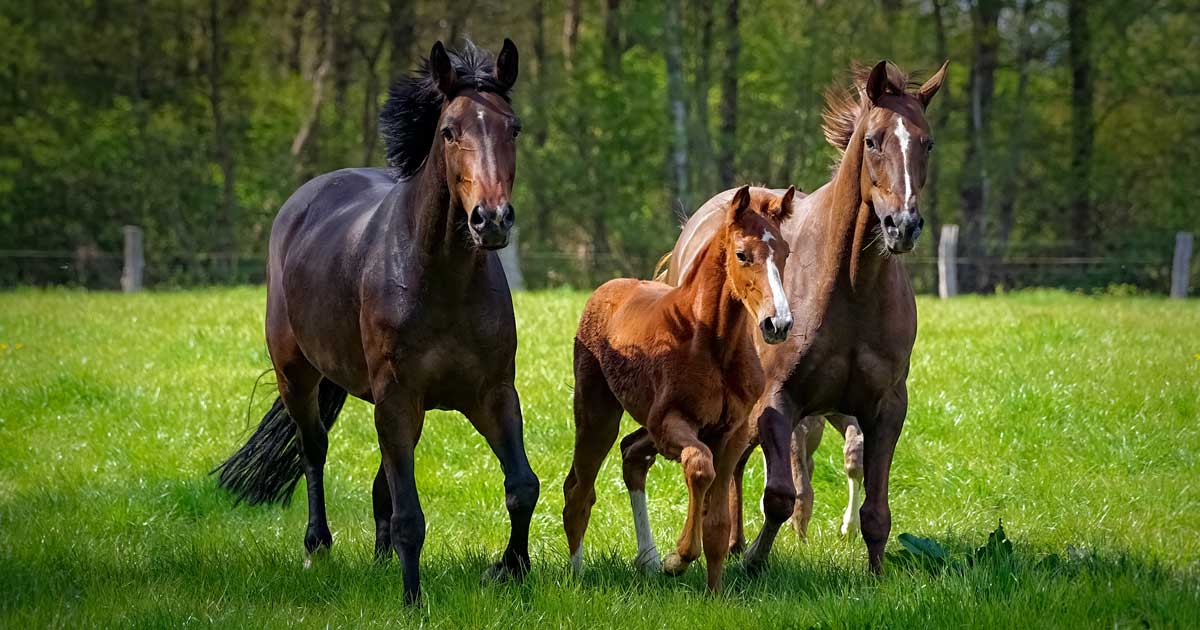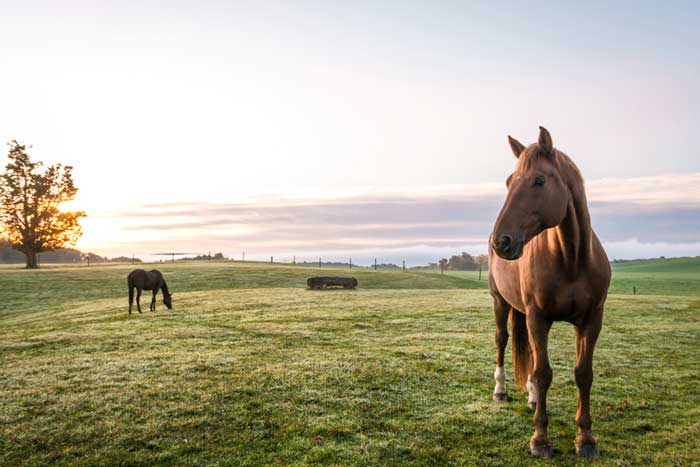12 Nov 2020
Preventive health: key messages and effective ways to deliver them
Adele Williams looks at some of the most important aspects of preventive medicine, with particular emphasis on vaccination and parasite control.

Image: © Countrypixel / Adobe Stock

Preventive health care is the cornerstone of general veterinary practice, to limit serious and life-threatening disease.
Owners have a responsibility to protect their own horses, but in doing so they can also contribute to protection of the general UK equine population from outbreaks of viral disease, and from the development of anthelmintic resistance in parasites.
Vaccinations
Vaccination of horses, ponies and donkeys will help protect each individual animal from clinical signs of disease, and reduce disease spread by limiting viral replication and shedding in vaccinated hosts. Therefore, a greater number of animals vaccinated will also help protect unvaccinated individuals against disease.
It is important to protect against infectious diseases – not only for the sake of equine health and welfare, but also because of the economic impact on equestrian sports (Smyth et al, 2011).
Clients need to be reminded that management and biosecurity are just as important as vaccination in controlling the spread of infectious disease, and we should not become blasé about biosecurity measures just because animals have been vaccinated.
Manufacturer protocols are based on rigorous testing and establishment of safety for use. The same volume is administered to a miniature donkey and a shire horse, as vaccines are not dose-responsive; rather, it is the amount needed to elicit an immune response.
In equine medicine, extra consideration must be given to the regulations of the sport governing bodies and their vaccination requirements for competition entry (Cooke, 2013). These regulations have been produced with the aim of limiting the spread of infectious disease at sporting events where a large number of horses mix.

Parasite control
Summary
Additional guidance
- Avoid underdosing by weighing (at least with weigh tape) before anthelmintic administration.
- New arrivals should have FWEC performed and larvicidal anthelmintic treatment before being turned out with other horses.
- Herbal supplements, including garlic and ginger, do not have proven clinical efficacy in endoparasite control, and should not be used as a substitute for anthelmintics on those animals that need them.
Vaccination against endoparasites in equids has not yet been developed. However, a recombinant vaccine has been shown to decrease worm burden and larval shedding of lungworm (Dictyocaulus viviparus) in cattle (Strube et al, 2015), so vaccines may become tools of equine endoparasite control in the future.
Vaccine key messages and recommendations are:
- vaccines limit clinical signs of disease
- vaccines limit spread of viral disease
- the more horses vaccinated, the greater protection of the entire horse population
- equine influenza vaccination boosters every six months after initial course
- tetanus vaccination every two years after initial course
- EHV-1 and EHV-4 vaccination every six months after initial course
- EHV-1, EHV-4 and rotavirus vaccination of pregnant mares
- biosecurity is as important as vaccination in limiting spread of disease
Endoparasite control key messages are:
- Frequent treatment of every animal with anthelmintics at regular intervals is not necessary to keep equids healthy.
- Each equine premises needs to work with its vet(s) to adopt a parasite control plan to suit all the individual animals on that specific premises.
- Surveillance of parasite burdens with FWEC and FWEC reduction calculations is essential.
- ELISA tests can identify animals not needing tapeworm and cyathostome treatment.
- Deworming treatments should be given at appropriate times of year to coincide with relative parasite burdens and transmission cycle epidemiology.
- Refugia is vital to limit anthelmintic resistance.
- Pasture management is essential in parasite control.
- Different age groups of horses have different needs in terms of parasite control.
References
- Bellaw JL et al (2018). Anthelmintic therapy of equine cyathostomin nematodes – larvicidal efficacy, egg reappearance period, and drug resistance, Int J Parasitol 48(2): 97-105.
- Cooke G (2013). Vaccination for equine influenza: the sports regulator’s viewpoint, Equine Vet J 45(6): 770-771.
- Daly JM et al (2013). What can mathematical models bring to the control of equine influenza? Equine Vet J 45(6): 784-788.
- Elton D and Cullinane A (2013). Equine influenza: antigenic drift and implications for vaccines, Equine Vet J 45(6): 768-769.
- Gould JC et al (2013). The effects of windrow composting on the viability of Parascaris equorum eggs, Vet Parasitol 191(1): 73-80.
- Heldens JG et al (2001). Clinical and virological evaluation of the efficacy of an inactivated EHV1 and EHV4 whole virus vaccine (Duvaxyn EHV1,4). Vaccination/challenge experiments in foals and pregnant mares, Vaccine 19(30): 4,307-4,317.
- Horspool LJI and King A (2013). Equine influenza vaccines in Europe: a view from the animal health industry, Equine Vet J 45(6): 774-775.
- Kaplan RM and Nielsen MK (2010). An evidence-based approach to equine parasite control: it ain’t the 60s anymore, Equine Vet Educ 22(6): 306-316.
- Nielsen MK (2016a). Evidence-based considerations for control of Parascaris spp infections in horses, Equine Vet Educ 28(4): 224-231.
- Nielsen MK (2016b). Equine tapeworm infections: disease, diagnosis and control, Equine Vet Educ 28(7): 388-395.
- Peregrine AS et al (2014). Anthelmintic resistance in important parasites of horses: does it really matter? Vet Parasitol 201(1-2): 1-8.
- Proudman CJ et al (1998). Tapeworm infection is a significant risk factor for spasmodic colic and ileal impaction colic in the horse, Equine Vet J 30(3): 194-199.
- Smyth G et al (2011). Insights into the economic consequences of the 2007 equine influenza outbreak in Australia, Australian Vet J 89(supp1): 151-158.
- Strube C et al (2015). Vaccination with recombinant paramyosin against the bovine lungworm Dictyocaulus viviparus considerably reduces worm burden and larvae shedding, Parasit Vectors 8: 119-119.
- Waghorn TS et al (2008). Brave or gullible: testing the concept that leaving susceptible parasites in refugia will slow the development of anthelmintic resistance, NZ Vet J 56(4): 158-163.
- Waghorn TS et al (2009). Drench-and-shift is a high-risk practice in the absence of refugia, NZ Vet J 57(6): 359-363.
Meet the authors
Adele Williams
Job Title